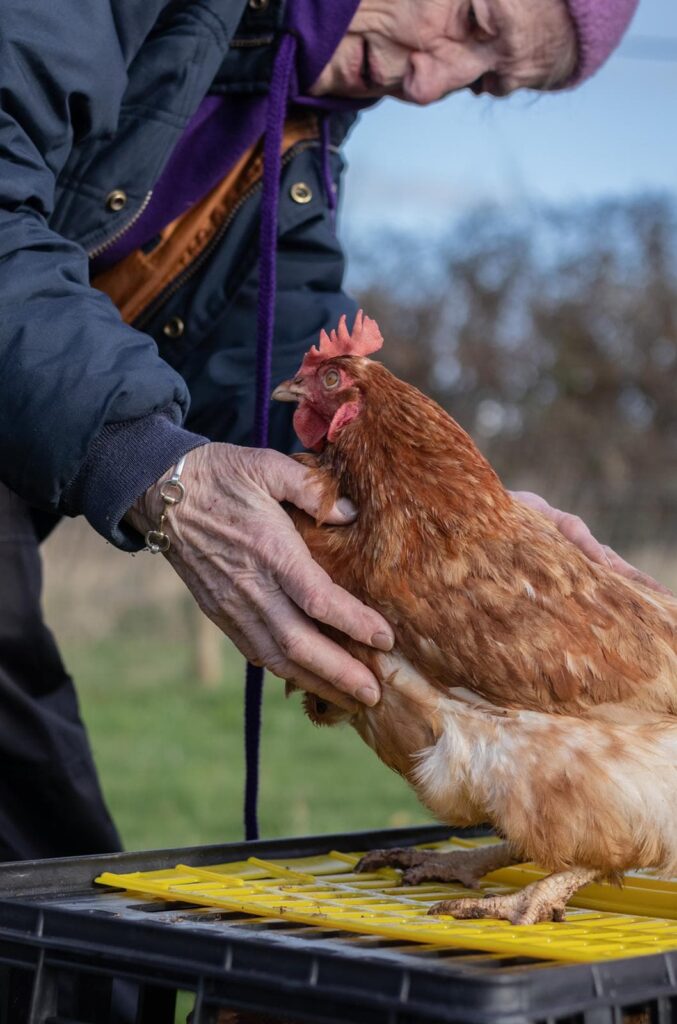Advice from our semi-retired Vet, Hilary La Thrope BVMS MRCVS
If your hen is a bit fluffed up, standing away from the others and generally looking a bit “off” the first thing to do is ask yourself a few questions:
- How old is she and how long have you had her
- Any new additions to your flock
- Any change in food and treats fed
- Is she eating/drinking
- Is she moulting
- Could she be broody
- Is she laying
- Worming history

Then check:
- General demeanour – bright, alert or dull, sleepy
- Stance normal/penguin/hunched stance
- Is her comb a normal colour and size or pale and shrunken
- Any facial swelling
- Are her eyes normal, same both sides, any discharge (bubbles/mucous)
- Quick look inside the beak for anything abnormal
- Any coughing or sneezing
- How is her breathing (laboured/rasping/crackly)
- Crop – is it full or empty, fluidy or hard, does it empty over night
- Body weight and does the breast bone feel more prominent
- Vent – is it clean, any discharge, any sign of being egg bound
- Faeces – normal/diarrhoea, colour, consistency
- Feel the abdomen – hard, soft, swollen, fluidy
- Does her poop look normal
- Feather quality (moulting/feather loss)
- Any sign of lice or mites
This is a guide to help you identify your hen’s problem but is not intended as an alternative to proper veterinary care.
Putting this into practise:
Some would say I waste too much time chatting to the ladies in the hen bank, but for this little lady it might just be a life saver. You know when you look at a hen and know she “isn’t right”. I took her out, couldn’t find anything obvious wrong but kept her separate from the others.
I saw her straining, as if trying to lay, but when I checked, there wasn’t an egg there. Knowing something was up, I sedated her to have a proper look. When I inverted her cloaca I could see scar tissue, probably her cloaca had been pecked as she was laying an egg. In these cases it’s usually the oviduct that is scarred and has a stricture to prevent laying, but not in this case. When I opened the scar tissue out came a huge amount of poop. The exit to her bowel had been closed off by the scar tissue.
I don’t know if she will survive, but at least she has a chance now. Let’s hope for a happy ending.

About Hilary:
I was one of those children that, whilst growing up, was surrounded by animals. Of course this included chickens and ducks. During my career as a vet I worked for the the animal charity, the Celia Hammond Animal Trust and latterly ran my own practice. My work focused heavily on orthopaedic and soft tissue surgery but since semi-retiring I have focused on the veterinary care of chickens.
I have kept chickens when time and career have allowed but now I am semi-retired, I have the opportunity to indulge my passion for keeping hens again. I love helping on the farm teams, helping with poorly hens and rehoming hens to their forever homes. I want to increase the understanding of chicken health issues, allowing people to help their hens when possible.
Leave a Reply